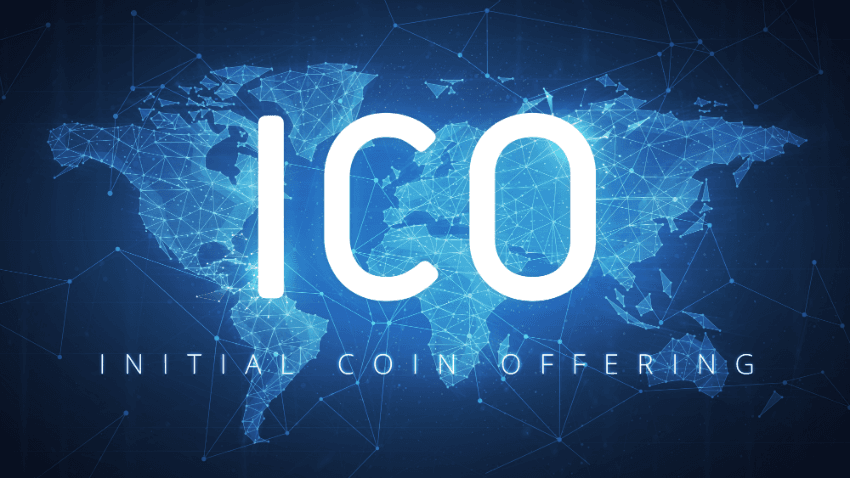
Recent years have witnessed an impressive growth of the global cryptocurrency market, followed by the rise of the Initial Coin Offering (ICO), as an appealing alternative to time-demanding venture capital funding rounds.
According to data gathered by AksjeBloggen, the five largest Initial Coin Offerings reached $7.7bn in total funding. With nearly $4.2bn in the value of raised funds or 55% of that amount, the blockchain platform EOSIO represents the world’s largest ICO.
Launching Projects Through Token Sales
Initial Coin Offering or the crypto industry’s equivalent to an Initial Public Offering (IPO) was created in 2016 when the Bitcoin’s popularity started growing. As a type of funding mechanism, primarily used for cryptocurrency projects, ICOs provided easy access to funds for startups launching new coin, app or service.
Moreover, this creation and sale of a new cryptocurrency token didn’t require founders to give up equity in return for the investor’s money. Their return is an increased value of the tokens if the projects ends successfully.
In May 2018, the Cayman Islands startup Block.one gained a lot of publicity after raising a staggering $4.2bn for funding its blockchain platform called EOSIO, more than three biggest funding rounds of 2018 combined. Till today, the EOSIO remained the biggest ICO in the world.
With $1.7bn in the total value of raised funds, Telegram Open Network (TON) ranked as the second-largest ICO globally, revealed ICObench data. This blockchain platform was designed to provide decentralized cryptocurrency to anyone with a smartphone, similar to Facebook’s Libra project.
More than 5,700 ICOs Since 2014
The ICObench data show Bitfinex ranked as the third-largest ICO globally, with $1bn in the total value of sold LEO tokens. Founded in December 2012 as a P2P Bitcoin exchange, Bitfinex offered digital asset trading services to users worldwide. Over time, the platform expanded its services by providing support for more cryptocurrencies. Dragon, the digital currency for casinos, follows with $320 million in funding, respectively.
Statistics show that 5,725 ICOs have been created since 2014, with a total of nearly $65bn raised. Analyzed by geography, the United States represents the leading country with 717 ICOs and $7.3bn in total funding. Singapore ranked second with 587 ICOs and $2.5bn in the total value of raised funds. The United Kingdom follows with 514 Initial Coin Offerings and $1.5bn in the total funding.
Some of the risks associated to ICOs
As tradersdna pointed out in this article about why 90% of Initial Coin Offerings (ICOs) & Security Token Offerings (STOs) fail, expert Alexander Larsen, President Baldwin Global Risk Services Ltd. found out the following risks:
Below are just some of the key risk areas the companies I have spoken to face going forward, and which I believe all ICO’s and STO’s need to be in a position to manage:
1. Funding related risks: This is the nature of the business. With much of the work being research and development based as opposed to creation of an immediate product, initial funding, ongoing funding and future funding remains a key risk to the industry.
2. Regulation related risks: Regulation is different in every country and legal frameworks don’t always protect ICOs, thereby this is a major concern to companies in the space.
3. Exchanges related risks: Many coins and tokens are on various exchanges globally but 90% of volume may be on one specific exchange, such as on a US based exchange for example. If that exchange shuts down (hacking incident, new regulations, and business decisions) their coin could be heavily impacted
4. Assets: This is no doubt a concern for many companies. There needs to be a balance between having your assets in crypto currency and cash. Some would argue that you should keep it in the currency you trade with, but others would say Bitcoin increases so much and is a better long term investment. It is however also very volatile. Additionally, there is 18 trillion dollars in circulation vs 66 billion Bitcoin. So it is therefore easier to manipulate the Bitcoin market.
5. Product completion – Too many ICO’s and STO’s have a vision that is just unachievable. The scales and promises are too grand. Not only do deadlines get missed but a product never seems to be anywhere near completion. Whilst investors will “HODL” (a term used in the cryptocurrency community for holding a coin no matter how low the price gets and for the long term) as long as possible, when products don’t see the light of day and no progress seems to be being made, it spells trouble.
6. Lack of use cases, competition and traditional alternatives:going hand-in-hand with product completion is use case. whilst some companies may go on to develop and launch a working product, the use case for these products is often limited. Firstly, a product has to solve a current problem. If it doesn’t, it’s unlikely anyone will use it.
Tradersdna is a leading digital and social media platform for traders and investors. Tradersdna offers premiere resources for trading and investing education, digital resources for personal finance, market analysis and free trading guides. More about TradersDNA Features: What Does It Take to Become an Aggressive Trader? | Everything You Need to Know About White Label Trading Software | Advantages of Automated Forex Trading








